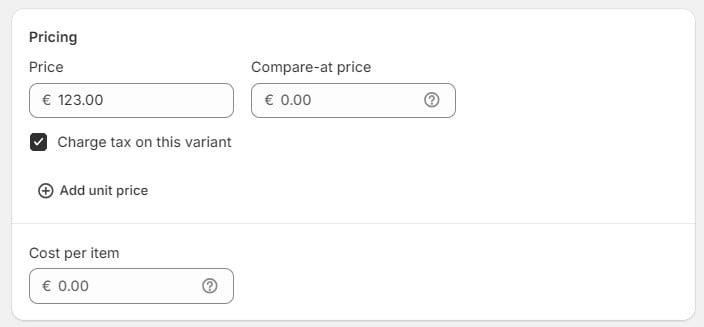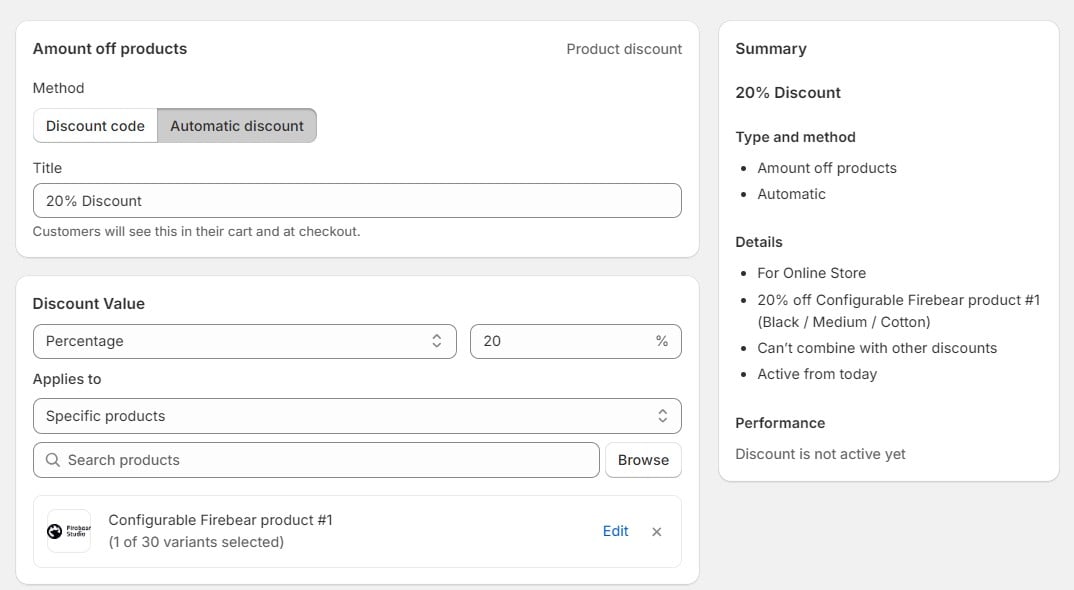Understanding MAP Compliance: Your Guide to Minimum Advertised Price Policies in E-Commerce

In the cutthroat world of e-commerce, price can make or break a brand. Retailers constantly compete to offer the best deal, and the race to the bottom can spiral out of control without boundaries. That’s where Minimum Advertised Price (MAP) compliance steps in — a rulebook that prevents retailers from advertising prices below a certain threshold set by the brand.
MAP compliance isn’t just a policy, it’s a strategic move to safeguard brand value, protect retailers, and ensure a level playing field in the marketplace. It’s about making sure your product’s price integrity remains intact, whether it’s listed on a big-name e-commerce platform like Amazon or a niche online store.
But here’s the tricky part: enforcing MAP pricing compliance requires more than a set of guidelines. Brands must monitor, report, and penalize violations — all while juggling relationships with retailers.
The complexity only increases when you consider how MAP compliance works across different e-commerce platforms like Magento, Shopify, and Shopware. Each platform has its own quirks and methods for integrating minimum advertised price policies, making it critical to understand how MAP fits into your tech stack. Without proper enforcement, the effort becomes a paper tiger, leading to damaged brand reputation and strained retailer relationships.
In this guide, we’ll break down exactly what MAP compliance means, why it matters, and how brands can ensure their products maintain consistent advertised pricing across digital storefronts. Whether you’re managing your own online store or a vast network of retailers, MAP compliance is key to maintaining both profitability and trust.

Table of contents
What is MAP Compliance?
At its core, MAP compliance revolves around one simple idea: protecting a brand’s pricing integrity. The Minimum Advertised Price is the lowest price a retailer can publicly advertise for a product, as defined by the manufacturer.
It’s important to note that MAP doesn’t dictate what retailers can actually sell the product for — it only governs the advertised price. The goal?
To prevent retailers from devaluing products in a race-to-the-bottom price war that erodes brand reputation and profits. But why does this matter?
Without a minimum advertised price policy, a brand’s products could be constantly undersold, triggering a downward spiral in pricing that can hurt everyone in the supply chain. Smaller retailers are the first to suffer, unable to compete with larger e-commerce giants slashing prices. Manufacturers, in turn, lose their premium market positioning as their products become seen as bargain-bin items.
What is MAP compliance, then?
Under MAP compliance we assume the act of ensuring that all retailers adhere to this pricing floor when advertising a product. Compliance involves monitoring how products are priced across different platforms, from Amazon to niche online stores. When retailers follow MAP policies, they help maintain fair competition and prevent market distortion.
However, minimum advertised price policy violations can lead to serious consequences:
- For retailers, non-compliance often results in penalties such as restricted access to products, loss of discounts, or even termination of partnerships with the manufacturer.
- For brands, failure to enforce MAP can result in widespread price erosion, undermining their entire pricing strategy and damaging their reputation in the marketplace.
Does MSRP play a role in that? No, it doesn’t.
Unlike MAP, a manufacturer’s suggested retail price is a recommended price set by manufacturers for selling their products. Unlike MAP policies, which enforce a minimum advertised price, MSRP is a guideline, giving retailers a starting point for pricing. While MAP sets a floor for advertising prices, MSRP can be ignored by retailers, offering more flexibility in pricing strategies.
In today’s e-commerce environment, MAP compliance is not just about protecting profits — it’s about maintaining control over your brand and how it’s perceived. Without consistent enforcement, both retailers and manufacturers risk losing far more than just a few sales; they could be sacrificing their entire business model. Let’s elaborate.
Why MAP Compliance Matters in E-Commerce
In a world where consumers can compare prices with just a few clicks, maintaining control over how your products are advertised is essential. From this perspective, MAP compliance isn’t just a legal safeguard. It’s a critical strategy for brand survival.
At its heart, minimum advertised price policies are designed to protect both the manufacturer’s reputation and the profitability of retailers. But the stakes are even higher in the fast-paced, hyper-competitive world of e-commerce.
Without MAP pricing compliance, the e-commerce ecosystem quickly spirals into chaos. Retailers engage in price wars, undercutting each other to attract customers. While this might sound like a win for shoppers, it’s a disaster for brands and smaller retailers.
Lower prices might boost short-term sales, but they devalue the product in the long run. Consumers begin to associate the brand with discounts, not quality. Worse, smaller sellers can’t compete and get squeezed out of the market, leaving larger e-commerce giants with a virtual monopoly.
For brands, this means more than just lost revenue — it’s a loss of control over how their products are positioned in the market.
Thus, MAP compliance ensures that retailers follow the rules, protecting brand equity and maintaining a consistent pricing strategy. It gives manufacturers the power to ensure their products are not perceived as low-cost commodities but as valuable items worth the price tag. Yet, enforcing MAP pricing compliance in e-commerce is no easy feat.
The digital marketplace is vast, fragmented, and fast-moving. Products are often listed on multiple platforms — from e-commerce marketplaces like Amazon and eBay to all possible ecommerce stores powered by Magento, Shopify, Shopware, etc.
It’s not a secret that each platform has its own rules and nuances. Monitoring these platforms to ensure adherence to MAP is a challenge, often requiring automated tools to keep track of violations. Even then, enforcement can feel like a game of digital whack-a-mole, with some retailers deliberately testing the limits or hiding their true prices behind login walls and discount codes.
These complexities highlight why MAP compliance is crucial in e-commerce. It’s not just about keeping prices in line — it’s about ensuring a level playing field for all retailers, maintaining healthy competition, and protecting the long-term value of a brand.
Minimum Advertised Price Enforcement
Having a minimum advertised price policy is one thing. Enforcing it? That’s where the real challenge lies.
Minimum advertised price enforcement is the critical piece that ensures brands maintain their pricing strategy, and without it, even the most well-defined MAP policies are nothing more than ink on paper.
Effective MAP enforcement requires vigilance and a combination of methods to ensure compliance across the increasingly fragmented digital landscape. Brands often rely on automated tools that monitor pricing across e-commerce platforms like Amazon, Shopify, and even smaller third-party retailers. These tools scan for violations, flagging any listings that dip below the minimum advertised price. With so many products being listed and sold in real time, automation (and, of course, AI in e-commerce) is often the only way to stay ahead of potential breaches.
However, automation isn’t a silver bullet.
Some retailers may hide their true prices behind login screens, members-only deals, or promotional codes, meaning manual checks are still necessary to catch more sophisticated attempts at MAP violations. Amasty’s Magento 2 Customer Group Catalog, for instance, allows merchants to tailor their product offerings, control product visibility, and customize pricing for specific customer segments. While these features offer great flexibility, they also present a risk — making it easier for retailers to bypass MAP compliance requirements by manipulating prices for certain groups.
Considering this situation, some brands opt to work with third-party enforcement agencies, which provide additional layers of oversight and can offer a more comprehensive approach to minimum advertised price enforcement. These agencies combine monitoring software with human expertise to identify and address violations swiftly.
Communication is another key component. When brands spot a retailer violating MAP, the first step is often a warning, delivered either through direct communication or automated alerts.
Retailers may not always be aware that their pricing conflicts with the brand’s MAP compliance policy, so initial outreach tends to focus on education. This typically involves reminders of the MAP agreement, detailed information about the violation, and guidelines on how to correct the pricing issue.
When that fails, the consequences get more severe. Persistent offenders may face penalties such as fines, the removal of distribution rights, or even legal action in extreme cases. For retailers, losing the ability to sell a popular product can be catastrophic, while brands risk damaging their relationships with retailers if enforcement isn’t applied consistently.
Implementation on Major E-Commerce Platforms
As a merchant, setting up MAP compliance is about ensuring that the prices you display across your e-commerce platforms align with minimum advertised price policies set by manufacturers. Proper configuration helps you avoid penalties while maintaining good relationships with suppliers. Below is a step-by-step guide for configuring MAP within the backends of Magento, Shopify, and Shopware, ensuring compliance with MAP policies.
Magento MAP Compliance
Magento offers robust options for managing MAP pricing compliance right from the backend, helping you control how and when prices are displayed. Here’s what you’ll see and how to set up MAP:
- In the Admin sidebar, go to Stores > Settings > Configuration.
- In the left panel, expand Sales and select Sales.
- Expand the Minimum Advertised Price section.

- Set Enable MAP to Yes if it’s not already enabled.
- Configure where and when the actual price will be visible — setting Display Actual Price to one of the following: In Cart, Before Order Confirmation, On Gesture (e.g., a click-to-see action).
- Enter custom messages for the Default Popup Text and What’s This Text as needed.
- Save your settings by clicking Save Config.
If you want to apply MAP to a single product in Magento 2, then do the following:
- Go to Catalog > Inventory > Products in the Admin sidebar.
- Select the product to edit, then expand Advanced Pricing below the Price field.

- Specify MAP.
- Set Display Actual Price to one of the following if applicable:
- Use Config (Default store settings)
- On Gesture (Price appears in a popup on click)
- In Cart (Price displayed in cart)
- Before Order Confirmation (Price shown before the order is confirmed)
- When finished, click Done, then Save.
Proceed to for further information.
Shopify MAP Compliance
Although not built in as a separate feature, setting up MAP pricing in your Shopify store is a straightforward process. To ensure that each product adheres to the minimum advertised price policy, you need to enter the correct prices for each product in your Shopify store:
- Log in to your Shopify Admin Panel, navigate to the Products section, and select the product to set the MAP for.
- Enter the MAP in the pricing field.
Optional: Set a higher Compare-at Price to show that the product is on sale but still above MAP.

- Once you’ve entered the MAP, click Save to update the product.
Next, you can automate price adjustments with price rules to ensure compliance with MAP policies for your Shopify store. Here’s how to set them up:
- Install a Pricing App. Since Shopify doesn’t have built-in MAP enforcement, you have to use apps like Prisync or PriceMole to monitor pricing. These apps help track your product prices across multiple platforms, ensuring they are MAP-compliant.
- Create an Automatic Discount Rule. If you offer discounts but need to ensure that they don’t violate MAP, you can create rules for discounts:

- Go to Discounts in the Admin Panel.
- Click Create Discount and choose Automatic Discount.
- Set the conditions for the discount, such as percentage or fixed amount, but ensure the final price doesn’t drop below the MAP.
- Set Price Alerts via Third-Party Apps. With apps like Prisync, configure alerts to notify you whenever a product’s price drops below the MAP threshold. This will allow you to manually adjust or stop the promotion before violating any agreements.
- Monitor Sales Channels. Ensure that all sales channels (including external marketplaces) are compliant with the MAP rules. The third-party apps help enforce pricing rules across channels, ensuring that no product is advertised below the required price.
- Test the Rule. After setting up the price rules, run tests to ensure they work correctly, adjusting product prices as necessary and ensuring promotions do not override the MAP.
Refer to for more information on a proper discount configuration.
Shopware 6 MAP Compliance
The situation in Shopware 6 is quite similar to Shopify when it comes to MAP compliance. Neither platform offers native MAP enforcement tools out of the box, so merchants on both platforms must rely on workarounds or third-party solutions to enforce and manage Minimum Advertised Price policies.
First, manually enter the correct prices for each product. Then, carefully monitor how promotions and discounts impact your pricing to ensure ongoing compliance.
Whether you’re using Magento, Shopify, Shopware, or any other e-commerce platform, ensuring MAP compliance is crucial. Regardless of the tools you choose, following these best practices will help you avoid penalties.
Best Practices for Retailers to Ensure MAP Compliance
Maintaining compliance with a minimum advertised price policy is crucial for retailers who want to foster strong relationships with brands while preserving their ability to compete in a crowded market.
However, staying compliant can sometimes feel like walking a tightrope, especially as the digital marketplace expands. Here’s a practical guide for retailers to help maintain compliance with MAP enforcement and avoid penalties.
Understand the MAP Policy Inside and Out
The first step to ensuring minimum advertised price compliance is understanding the policy thoroughly. Retailers should familiarize themselves with the exact terms of the MAP agreement, including which products are covered, what prices are allowed to be advertised, and where flexibility is permitted (if at all).
Many retailers make the mistake of assuming all MAP policies are the same — this can lead to unintentional violations. To avoid this, keep clear, up-to-date records of the MAP policies from each brand or manufacturer you work with. Regularly review the terms and ensure they’re shared across relevant teams, such as pricing, marketing, and customer support, so everyone is on the same page.
Automate Pricing Checks
With multiple products being listed across numerous online channels, keeping track of prices manually is nearly impossible. Retailers should implement automated pricing tools that monitor the advertised prices on their site and other marketplaces, flagging any potential minimum advertised price enforcement issues before they escalate.
Several third-party apps and services, like Prisync or Feedonomics, are designed specifically for monitoring MAP compliance across various platforms. By integrating these tools into your e-commerce operation, you can ensure that your advertised prices always align with the policies set by the manufacturer, preventing violations and penalties.
Avoid Backdoor Price Violations
Sometimes, violations occur unintentionally through indirect pricing tactics like promotional codes, bundle deals, or hidden pricing. These methods, while well-meaning, can still breach a brand’s minimum advertised price policy. Retailers should be cautious when running promotions that impact pricing visibility. Always check with the manufacturer to ensure that these promotions won’t conflict with the MAP terms.
To stay compliant, avoid discounting MAP-covered products below the minimum price threshold, even through indirect means. If you’re unsure about a promotion’s impact on compliance, consult with the brand first.
Communicate with Manufacturers
Building a transparent relationship with your suppliers and manufacturers can help prevent MAP violations before they occur. If you’re planning promotions or have questions about a product’s pricing flexibility, reach out to the manufacturer and discuss your plans. This communication will help avoid misunderstandings that could lead to MAP violations, and it shows your commitment to maintaining MAP compliance.
Additionally, if you notice other retailers violating the policy, communicate this information to the manufacturer. This not only protects your own business but also shows the brand that you’re dedicated to upholding fair competition.
Stay Informed on Policy Changes
MAP policies are not static; they can change based on market conditions, new product releases, or shifts in a brand’s strategy. Retailers must stay informed about any updates or modifications to minimum advertised price policies. A failure to adapt to these changes can easily result in a violation.
Make it a practice to review each brand’s MAP guidelines on a regular basis. Many brands provide newsletters or direct updates about their policies. Setting up reminders or scheduled reviews can ensure that you’re always working with the latest information.
Create Internal MAP Compliance Protocols
As your retail operation grows, managing MAP enforcement can become more complex. Developing internal protocols for handling MAP compliance ensures that everyone within your organization understands the importance of staying compliant.
Designate a team or individual responsible for maintaining MAP oversight, checking that pricing across all sales channels aligns with manufacturer requirements.
By creating a streamlined process for managing MAP policies — whether through automated alerts, manual checks, or regular audits — you reduce the risk of slipping below the advertised price thresholds.
Act Quickly to Correct Mistakes
Even the most diligent retailers can make mistakes. The key is addressing MAP violations quickly and transparently.
If you discover an issue, whether through your own pricing tools or a manufacturer’s alert, correct it immediately and communicate with the brand. Swift action demonstrates your commitment to minimum advertised price enforcement and helps maintain a positive relationship with the manufacturer.
Conclusion
As you can see, MAP compliance is more than just another annoying policy. It’s a safeguard that preserves brand integrity, ensures fair competition, and protects product value.
By adhering to minimum advertised price policies, both retailers and manufacturers can prevent the downward spiral of price wars that erode trust, damage reputations, and hurt profitability.
As the digital marketplace continues to evolve, the need for vigilant minimum advertised price enforcement becomes even more critical. Whether you’re a retailer selling across platforms or a manufacturer setting the rules, MAP policies play a crucial role in maintaining a level playing field and fostering sustainable business growth.
Now is the time for e-commerce brands to evaluate their MAP policies and take proactive steps to enforce compliance on all platforms. With the right strategies in place — be it automated monitoring, clear communication, or swift enforcement — businesses can navigate the complexities of pricing while ensuring long-term success in the ever-changing world of digital retail.









